Do you have a question about the Triumph Trident and is the answer not in the manual?
Explains the use of warning, caution, and note symbols in the handbook.
Explains the meaning of warning labels on the motorcycle and their references.
Emphasizes maintenance by authorized dealers for longevity and safety.
Advises on safe operation regarding road use, towing, and catalytic converter heat.
Details the locations of various warning labels on the motorcycle.
Identifies key parts of the Trident model with numbered labels.
Identifies key parts of the Tiger Sport model with numbered labels.
Identifies parts from the rider's perspective for the Tiger Sport.
Identifies parts from the rider's perspective for the Trident.
Explains where to find and record the Vehicle Identification Number (VIN).
Explains where to find and record the engine serial number.
Details the operation of ignition switch, steering lock, and related controls.
Covers the motorcycle's instrument display, warning lights, and gauges.
Provides information on fuel grade and ethanol compatibility.
Advises referring to a dealer for engine calibration and warns about incorrect fuel.
Explains what traction control is, its limitations, and how it functions.
Explains the correct procedure for stopping the motorcycle engine.
Details the procedure for starting the motorcycle engine, including safety precautions.
Explains how to move the motorcycle off from a stationary position.
Describes the process of shifting gears and provides warnings.
Explains the function and operation of the Triumph Shift Assist system.
Covers proper braking techniques, including emergency braking and warnings.
Provides instructions and warnings for safely parking the motorcycle.
Discusses factors affecting motorcycle handling at high speeds and necessary precautions.
Warns against installing accessories that impair control and emphasizes using genuine parts.
Provides guidance on distributing and securing loads, and warnings about weight limits.
Explains how passengers affect handling and provides instructions for passengers.
Emphasizes the importance of scheduled maintenance and warns against incorrect procedures.
Covers engine oil level inspection and warnings related to oil quality.
Advises checking coolant levels and provides information on the type of coolant used.
Details brake system maintenance, including pad and disc wear inspection.
Provides information on tire types, markings, and warnings about installation.
Covers battery safety, maintenance, charging, and disposal.
Explains how to identify and replace blown fuses with the correct rating.
Provides instructions and warnings for adjusting and maintaining headlights.
Emphasizes regular cleaning to preserve appearance and prevent corrosion.
Details precautions to protect sensitive areas before washing the motorcycle.
Provides step-by-step instructions for washing the motorcycle safely and effectively.
Outlines post-washing procedures, including lubrication and brake testing.
Advises on cleaning and protecting gloss paintwork with polish.
Provides specific care instructions for matt paintwork, advising against polish.
Explains how to clean and protect the exhaust system components.
Details procedures for preparing the motorcycle for storage and recommended storage conditions.
Outlines the terms, conditions, and duration of the Triumph motorcycle warranty.
Lists conditions that may void the warranty and items not covered.
Details the specific warranty for the motorcycle's noise control system.
Outlines the warranty specific to the motorcycle's emission control system.
Details the owner's responsibilities to maintain warranty coverage.
Lists specific parts covered under the emission control system warranty.
Lists exclusions and items not covered by the emission warranty.
Lists model-specific dimensions, weights, and performance figures.
Provides engine specifications, including type, displacement, bore, and stroke.
Details lubrication system type and engine oil capacities.
Lists coolant type, ratio, capacity, and thermostat opening temperature.
Provides specifications for the fuel system, including type, injectors, and fuel pump.
Lists fuel type and tank capacity.
Details ignition system type, rev limiter, and spark plug specifications.
Lists transmission type, clutch type, and gear ratios.
Provides tire sizes and recommended cold inflation pressures.
Lists specifications for battery, alternator, lights, and signals.
Lists frame specifications such as rake and trail.
Lists critical torque values for various components.
Specifies required fluids and lubricants for bearings, brake fluid, coolant, and engine oil.
Details compliance statements for the device with FCC Rules.
Outlines Canadian approval compliance for the device.
Declares compliance of mounted tires with relevant automotive vehicle quality control orders.
Explains the use of warning, caution, and note symbols in the handbook.
Explains the meaning of warning labels on the motorcycle and their references.
Emphasizes maintenance by authorized dealers for longevity and safety.
Advises on safe operation regarding road use, towing, and catalytic converter heat.
Details the locations of various warning labels on the motorcycle.
Identifies key parts of the Trident model with numbered labels.
Identifies key parts of the Tiger Sport model with numbered labels.
Identifies parts from the rider's perspective for the Tiger Sport.
Identifies parts from the rider's perspective for the Trident.
Explains where to find and record the Vehicle Identification Number (VIN).
Explains where to find and record the engine serial number.
Details the operation of ignition switch, steering lock, and related controls.
Covers the motorcycle's instrument display, warning lights, and gauges.
Provides information on fuel grade and ethanol compatibility.
Advises referring to a dealer for engine calibration and warns about incorrect fuel.
Explains what traction control is, its limitations, and how it functions.
Explains the correct procedure for stopping the motorcycle engine.
Details the procedure for starting the motorcycle engine, including safety precautions.
Explains how to move the motorcycle off from a stationary position.
Describes the process of shifting gears and provides warnings.
Explains the function and operation of the Triumph Shift Assist system.
Covers proper braking techniques, including emergency braking and warnings.
Provides instructions and warnings for safely parking the motorcycle.
Discusses factors affecting motorcycle handling at high speeds and necessary precautions.
Warns against installing accessories that impair control and emphasizes using genuine parts.
Provides guidance on distributing and securing loads, and warnings about weight limits.
Explains how passengers affect handling and provides instructions for passengers.
Emphasizes the importance of scheduled maintenance and warns against incorrect procedures.
Covers engine oil level inspection and warnings related to oil quality.
Advises checking coolant levels and provides information on the type of coolant used.
Details brake system maintenance, including pad and disc wear inspection.
Provides information on tire types, markings, and warnings about installation.
Covers battery safety, maintenance, charging, and disposal.
Explains how to identify and replace blown fuses with the correct rating.
Provides instructions and warnings for adjusting and maintaining headlights.
Emphasizes regular cleaning to preserve appearance and prevent corrosion.
Details precautions to protect sensitive areas before washing the motorcycle.
Provides step-by-step instructions for washing the motorcycle safely and effectively.
Outlines post-washing procedures, including lubrication and brake testing.
Advises on cleaning and protecting gloss paintwork with polish.
Provides specific care instructions for matt paintwork, advising against polish.
Explains how to clean and protect the exhaust system components.
Details procedures for preparing the motorcycle for storage and recommended storage conditions.
Outlines the terms, conditions, and duration of the Triumph motorcycle warranty.
Lists conditions that may void the warranty and items not covered.
Details the specific warranty for the motorcycle's noise control system.
Outlines the warranty specific to the motorcycle's emission control system.
Details the owner's responsibilities to maintain warranty coverage.
Lists specific parts covered under the emission control system warranty.
Lists exclusions and items not covered by the emission warranty.
Lists model-specific dimensions, weights, and performance figures.
Provides engine specifications, including type, displacement, bore, and stroke.
Details lubrication system type and engine oil capacities.
Lists coolant type, ratio, capacity, and thermostat opening temperature.
Provides specifications for the fuel system, including type, injectors, and fuel pump.
Lists fuel type and tank capacity.
Details ignition system type, rev limiter, and spark plug specifications.
Lists transmission type, clutch type, and gear ratios.
Provides tire sizes and recommended cold inflation pressures.
Lists specifications for battery, alternator, lights, and signals.
Lists frame specifications such as rake and trail.
Lists critical torque values for various components.
Specifies required fluids and lubricants for bearings, brake fluid, coolant, and engine oil.
Details compliance statements for the device with FCC Rules.
Outlines Canadian approval compliance for the device.
Declares compliance of mounted tires with relevant automotive vehicle quality control orders.
| Engine Capacity | 660 cc |
|---|---|
| Transmission | 6-speed |
| Seat Height | 805 mm |
| Dry Weight | 189 kg |
| Frame | Tubular steel perimeter frame |
| Engine Type | Liquid-cooled, 12-valve, DOHC, inline 3-cylinder |
| Max Power | 81 hp (60.5 kW) @ 10, 250 rpm |
| Max Torque | 47 lb-ft (64 Nm) @ 6, 250 rpm |
| Rear Suspension | Showa monoshock, preload adjustable |
| Front Brakes | Twin 310mm discs, Nissin 2-piston sliding calipers, ABS |
| Rear Brakes | Nissin single-piston sliding caliper, single 255mm disc, ABS |
| Fuel Tank Capacity | 14 Litres |
| Front Suspension | Showa 41mm upside down separate function forks (SFF) |
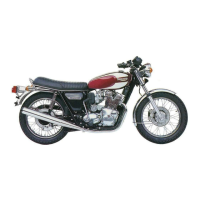
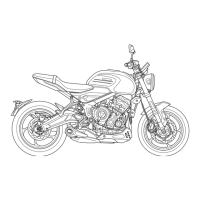
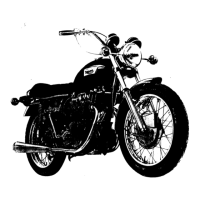
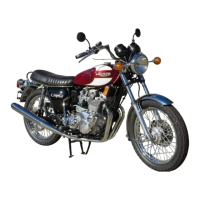

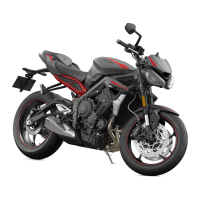
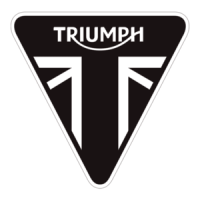




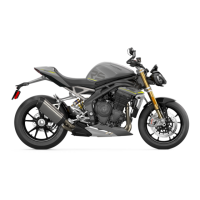
